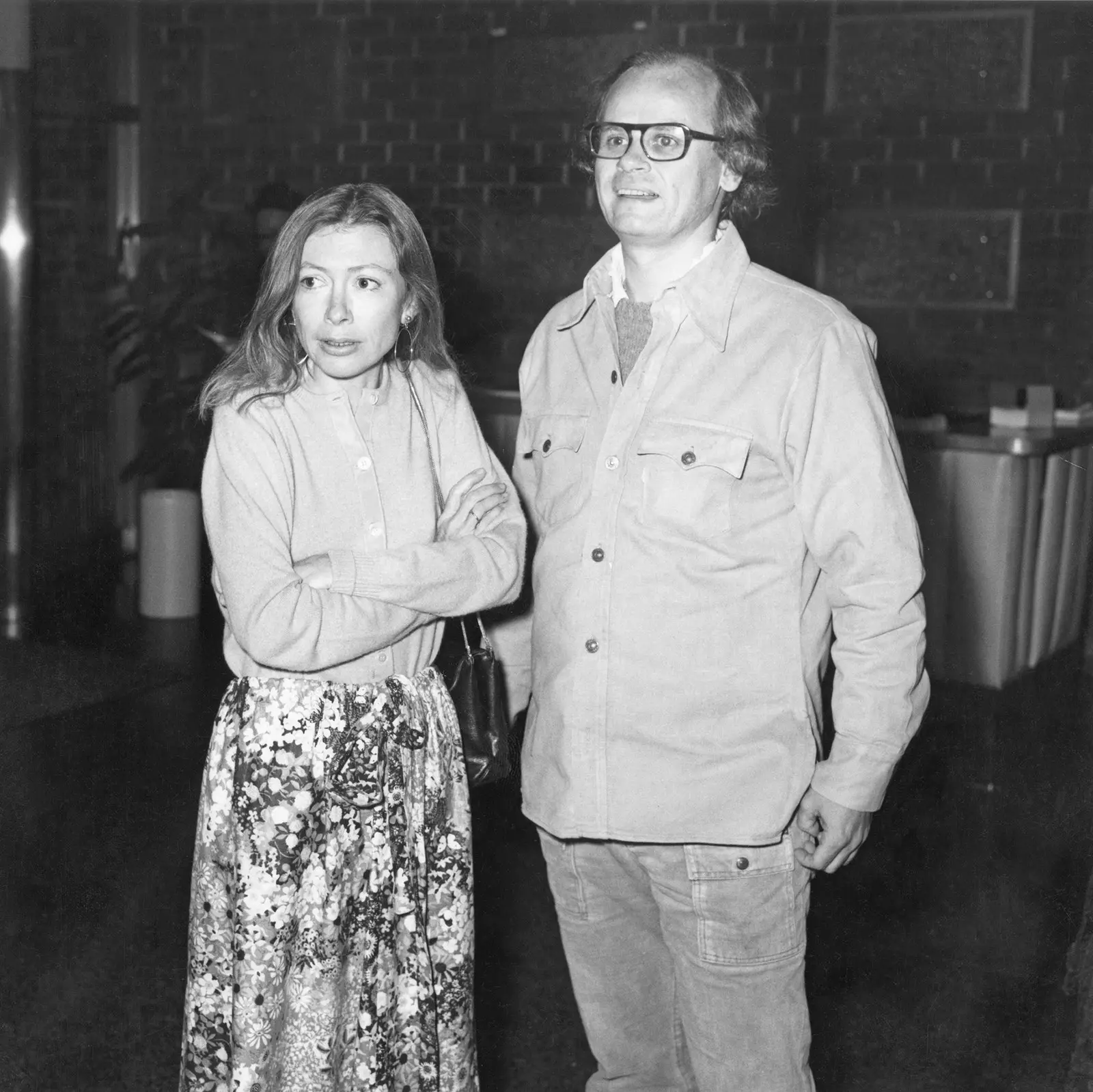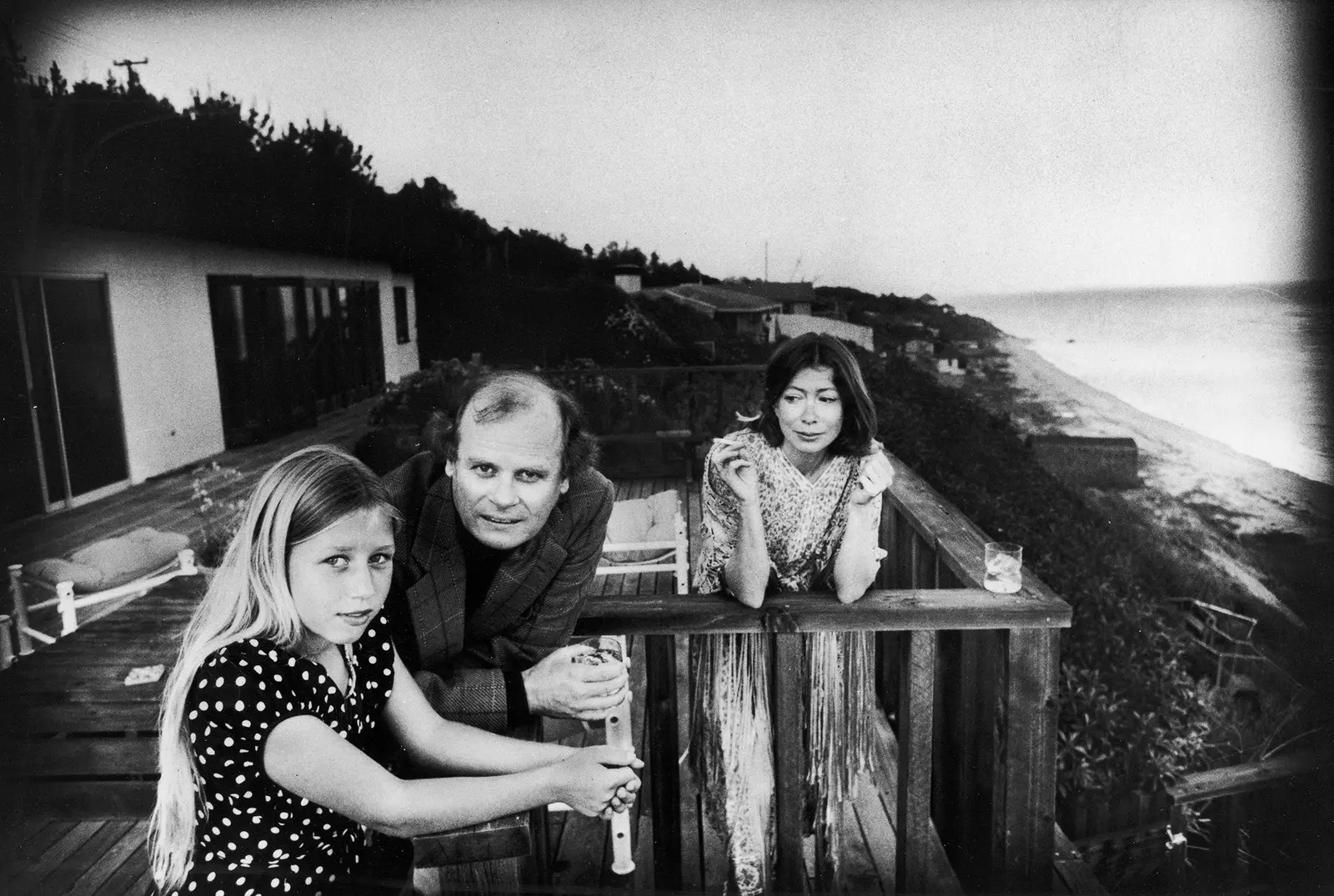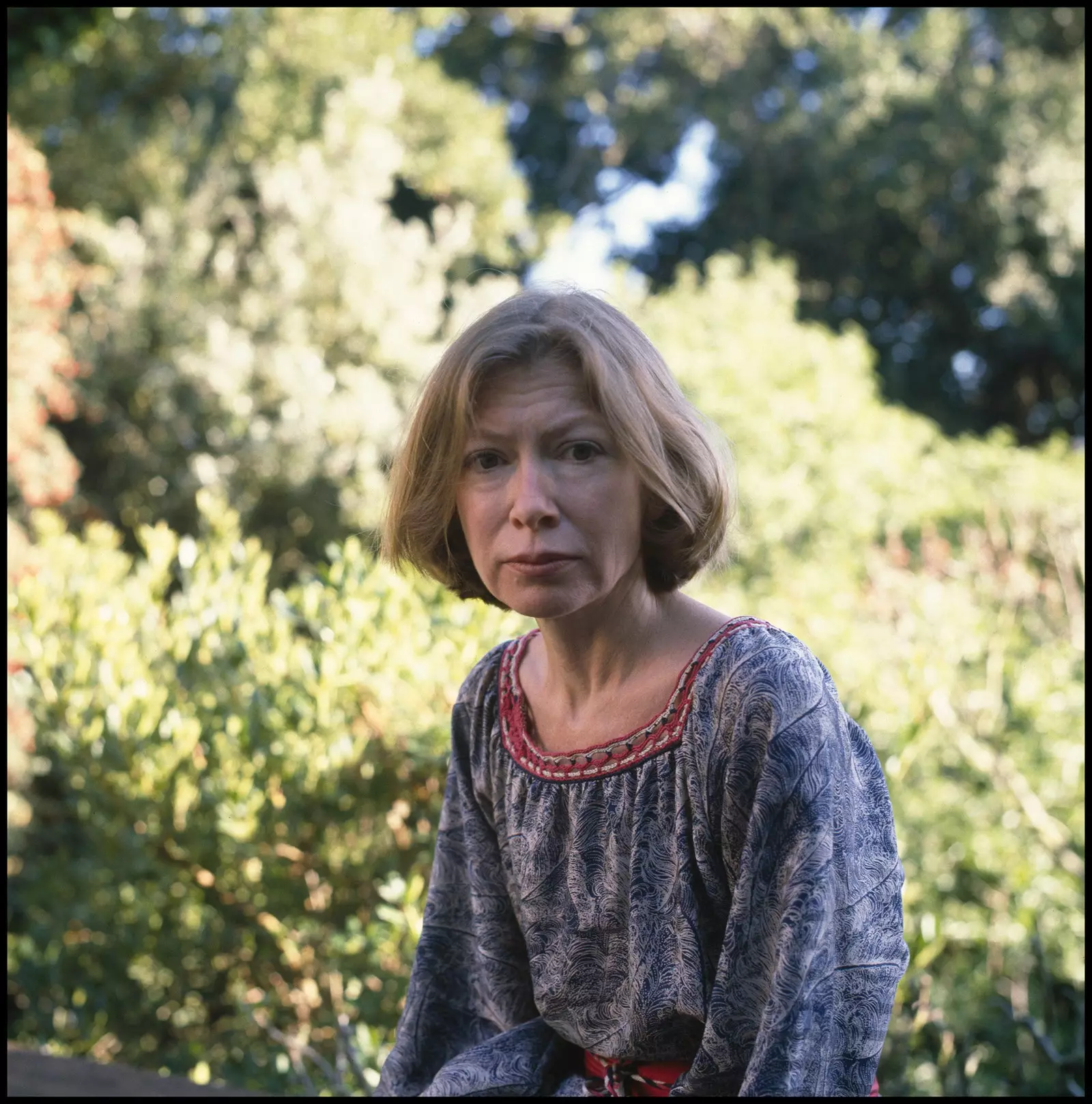"In the golden land the future is always attractive because nobody remembers last."
At the wheel of his Corvette Stingray, Cigar in hand behind excessive dark glasses, Joan Didion captures that essence of dystopian utopia that she was, at least until recently, the city of stars.
"A place belongs forever to those who claim it most strongly, remember it most obsessively, and she loves him so radically that she remakes him in her image", thus the writer opens her collection of essays The White Album. A city belongs to whom she imagines it. Places that acquire their own name and a point on the map because she has baptized them.
In one of the most famous scenes in American literature, night owl Maria Wyeth drives recklessly down the Harbor Freeway to downtown The Angels. The author of As the game comes -suggestively autobiographical- she also lurks in the night on Sunset Boulevard without caring too much about her fate.
Some meet Didion on the freeways of Pacific Coast Highway, or on busy Franklin Avenue. Others seek her out in the lunar landscape of the Mojave – “the harshest, most haunted California” – or in the most exquisite aspect of it: sneaking into Beverly Hills and the hills of Malibu with a certain impostor syndrome.
Few come close to the Joan of Sacramento. Her novels and essays explore the disintegration of American morality. where her essential concern is the fragmentation of oneself. A sense of anxiety and dread pervades much of her work.

Joan Didion and her husband, John Gregory Dunne, in Los Angeles (1972).
Our conception of the America of the 60s and 70s exists, largely thanks to the alma mater of New Journalism. Culturally canonical themes – Manson's crimes, meritocratic culture, crisis of values – took shape through her eye.
She could be surprisingly sharp and even cruel, the more so she kept quiet. than by what she turned into words. A petite, apparently calm appearance that worked in her favor. Being a woman gave confidence, she was a silent witness.
She acidly brought out the true colors of the very city that she fed her: Los Angeles, “the last stop for everyone who comes from elsewhere. Where people try to find a new lifestyle in the only places they know how to look: in movies or magazines.
At UC Berkeley she wins a Vogue scholarship, an editorial job she held for seven years. She develops the tints that permeate her early work: the colors of California, privilege, death, anxiety and undone women.
Joan Didion lives in Los Angeles for three decades and writes from there some of her best known essays –Crawl to Bethlehem, South and West– film scripts –A star is born– and she recounts or rather constructs an American social and political counterculture for Life, Esquire either New York Times and for history.

Joan Didion with her husband and her daughter, in 1976.
She always carries her notebook and writes everything down compulsively. Remarks about the murders on Cielo Drive or reminders such as: “Buy Linda Kasabian a dress in the shopping center I. Magnim”.
Historic department store that is now home to the luxurious Saks Fifth Avenue . kasabian by the way one of the main suspects in the media crime. Presence as one more member of the Hermetics The Doors rehearsals at the Sunset Sound Recording Studio.
She and her husband John Dunne move like cautious Fitzgeralds: eager to be where things happen. In the midst of their honeymoon, they leave a suite early in the Rancho San Isidro de Montecito for a long stay in Beverly Hills Hotel.
They miss social gatherings in the prohibitive Polo Lounge , their commandment dinners in La Scale –decadent Italian restaurant– in Shared table with Natalie Wood or the Angelina chronicler Eve Babitz. And at noon bourbon with publisher Henry Robbins at the Roosevelt.

Hotel Roosevelt, a classic among classics.
She now sees with irony that what was her first residence at 7406 Franklin Avenue function as an academy where spiritual experiences are sold.
Before transforming into Shumei American Center , those four walls had already witnessed more than one trip. A wandering Janis Joplin or Polanski spilling wine on her wedding dress.
“In the mansion on Franklin Avenue, people seemed to come in and out non-stop who had nothing to do with what I was doing. I knew where the sheets were kept, but not always who used them." describes in Those Who Dream the Golden Dream.
Didion woke up late and had only a cold bottle of Coke for breakfast in the seven-bedroom home where she also raised her daughter, Quintana Roo.
A house that embodied the paranoid excesses of an era. After five years, she changes the chaotic avenue for a quiet mansion on the Malibu coast.

Joan Didion in Berkeley, California (1981).
She knows that the steps on the asphalt of Los Angeles sound like torn dreams but she does not dwell on disappointment. He lives and feeds on her. She says goodbye to the days with margaritas in the Ernie's, a classic tex-mex in Hollywood that is still standing.
The city is a skilfully camouflaged disaster area. Here nothing expires because a limbic present is breathed. That is why even today it is disturbing to wonder how much there is in Los Angeles of pure imagination, but isn't that Eden.
“Which is the real California? We all ask ourselves that,” the writer claims. The truth about California is elusive and must be pursued with caution.
Perhaps it is better to define the Santa Ana wind that stuns the city to grasp the indecipherable region of promises, or the drowned dreams that chimerical flicker in this sparkling destiny to get closer to a definitive answer.
SUBSCRIBE HERE to our newsletter and receive all the news from Condé Nast Traveler #YoSoyTraveler
